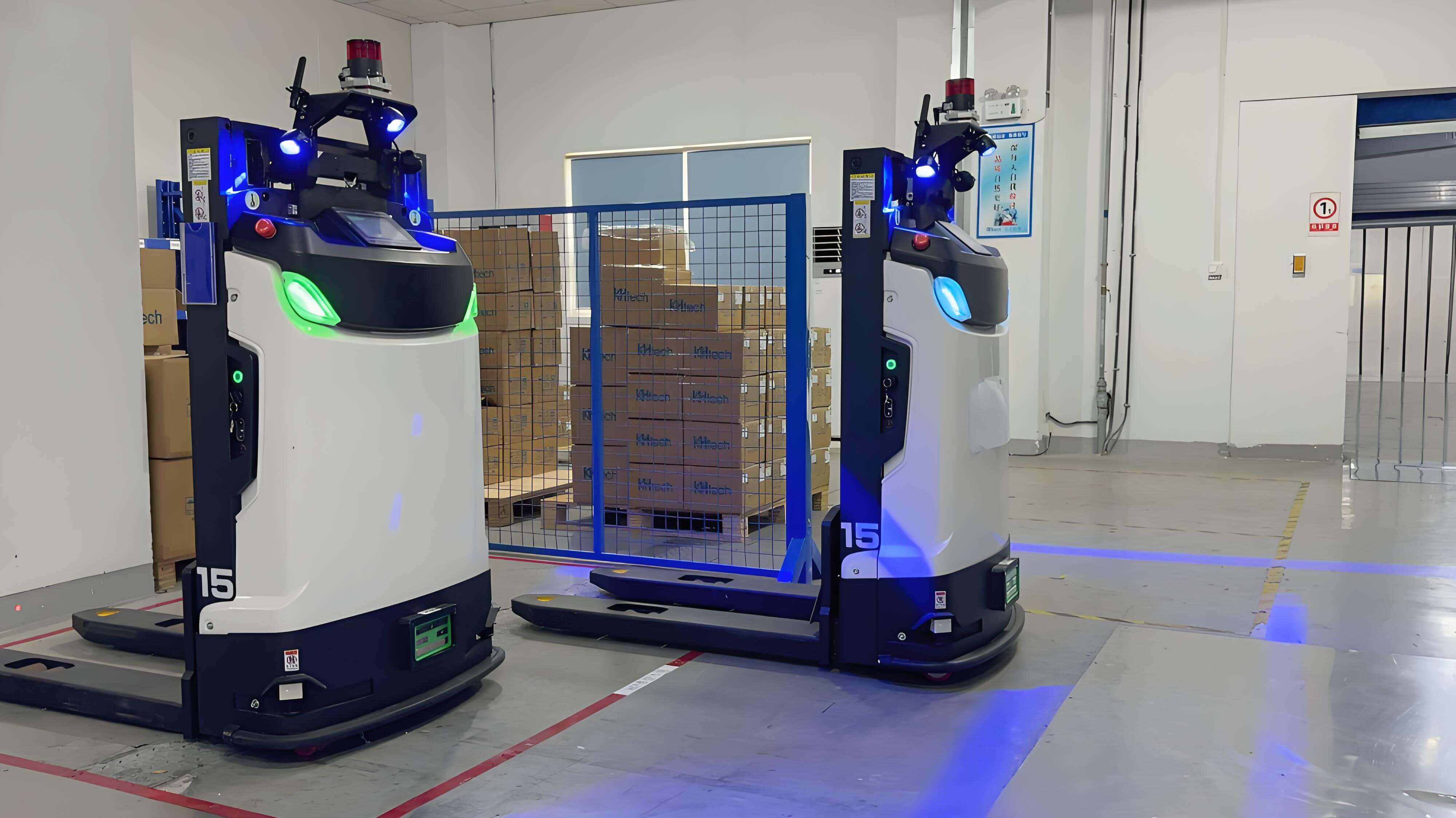Deep Dive into Autonomous Forklift Market Share
.MP10S%E5%8A%A0%E9%AB%98%E6%94%AF%E6%9E%B6%20(3).png)
Amidst the bustling warehouses and production lines, a revolution is unfolding silently and efficiently. Autonomous forklifts, as the core equipment of intelligent logistics, are entering a period of rapid development.
Compared to the traditional forklift market, the base for autonomous forklifts remains relatively small. The current global market penetration rate for autonomous forklifts is less than 2%, but this figure is growing at an annual rate exceeding 40%.
This data indicates that despite the increasing maturity of autonomous forklift technology, its practical application in the market remains in its infancy, with substantial room for growth. Their market share is expanding at a remarkable pace, representing not merely a technological trend but an inevitable choice for enterprises addressing labour shortages and enhancing operational efficiency. So, what is the current market share of autonomous forklifts? What are the driving forces behind this trend? And where is it headed in the future?
Market Size & Growth
A single figure cannot summarise the market share of autonomous forklifts, as it varies across regions, industries, and application scenarios. However, macro data and trends indicate that its penetration rate is accelerating.
According to forecasts from multiple market research organisations (such as Grand View Research, Allied Market Research, and MarketsandMarkets), the global autonomous forklift market is expanding at a compound annual growth rate (CAGR) exceeding 10%. The global market size is projected to surpass US$10 billion by 2030.
Forecasts from different institutions vary slightly, but the overall trend is clear—the market for driverless forklifts is expanding rapidly.
Market Share Analysis: In terms of existing stock, autonomous forklifts still account for a single-digit percentage of the total forklift fleet, yet they hold immense potential. From the perspective of incremental growth, however, the proportion of autonomous forklifts being procured for newly constructed automated warehouses and smart factories is rising rapidly. In certain high-end projects, they have even become standard equipment.
Market Share & Regional Distribution
Asia-Pacific leads globally: Grand View reports around 40.3% of market share in 2024. Mordor Intelligence places APAC’s share at 45.92% in 2024. Mordor Intelligence
Usage segmentation: Logistics & warehousing accounted for about 49.51% of the market in 2024.
Technology segmentation: Laser guidance accounted for approximately 38.64% of the market in 2024. By 2025, it will account for 62% of global new sales, representing the mainstream solution.
Why Is the Market Share of Driverless Forklifts Continuing to Rise?
The surge in market share is no accident; it stems from the convergence of multiple advantages.
- Labour Costs and Workforce Shortages: Particularly in Europe, the United States, Japan, South Korea and Southeast Asia, where labour costs are high and recruitment is challenging, driverless forklifts have emerged as a viable alternative solution.
- A qualitative leap in safety: Through multiple safeguards, including lidar and visual sensors, personnel and obstacles are effectively avoided, eliminating accidents involving personal injury or cargo damage caused by driver fatigue or operational errors.

- The surge in warehousing demand has created an urgent need for efficient, unmanned handling equipment. As industries such as automotive components, 3C electronics, and home appliances enter the Industry 4.0 era, demands for intelligent, visualised, and networked forklifts are rising.
- Some countries and regions are promoting intelligent warehousing and smart logistics, encouraging the use of automated and unmanned equipment.
- Advantages in Total Cost of Ownership (TCO): Although the initial investment is higher, in the long term, unmanned forklifts save on labour costs, reduce accident losses, and enhance management efficiency, with their total cost of ownership gradually demonstrating advantages.
Industry Application Distribution
The adoption rate of autonomous forklifts varies significantly across different industries, currently being most prevalent in the following sectors: automotive manufacturing and components, retail, third-party logistics (3PL) and warehousing, pharmaceuticals and food, and electronics manufacturing.
- In auto-tier: high volumes, multi-step logistics, low automation penetration — autonomous forklifts offer efficiency gains, risk reduction, faster throughput.
- In 3C/home appliance: high turnover, rapid fulfilment, varied SKUs benefit from flexible autonomous forklifts.
- Key application scenarios: pallet transport, rack loading/unloading, replenishment, inner-loop plant logistics, warehouse to production feed.
AiTEN Robotics meet the aforementioned market structure and evolving demands through their exceptional project delivery and reliability, comprehensive product portfolio spanning multiple scenarios, and flexible customisation options that address diverse automation requirements.
Case Study:
Efficiency increased by 50%: AiTEN’s narrow aisle handling solution for the automotive industry
MP10 revolutionizes MOEN’s long-distance material handling
.avif)
Conclusion
Overall, autonomous forklifts are transitioning from early pilot schemes towards large-scale deployment. As warehousing, logistics and manufacturing sectors demand greater efficiency, safety and sustainability, their market share continues to rise. For enterprises, early adoption and strategic investment in autonomous forklift technology represent not merely a means to enhance current operational efficiency but a crucial step in building future-proof core competitiveness.
Begin assessing your operations today and consider where autonomous forklifts could deliver value for your business!
About AiTEN Robotics
As a company specialising in intelligent logistics solutions, AiTEN Robotics has consistently focused on the ‘smart factory’ scenario, deeply integrating technological innovation with industry needs. It has provided comprehensive services to over 200 manufacturing clients worldwide: Leveraging a full range of material handling robot product portfolios to cover diverse material handling scenarios, we have developed an industry-grade intelligent scheduling system to enable efficient collaboration among multiple devices. Through a comprehensive lifecycle service system spanning pre-sales planning, deployment and implementation to operations optimization, we empower enterprises to achieve logistics intelligence transformation, continuously driving the digital upgrading and high-quality development of the manufacturing industry.
Is your warehouse prepared to embrace this efficiency revolution? Contact us immediately to secure expert consultation on AGV intelligent warehousing solutions!









_%E7%94%BB%E6%9D%BF%201.avif)

